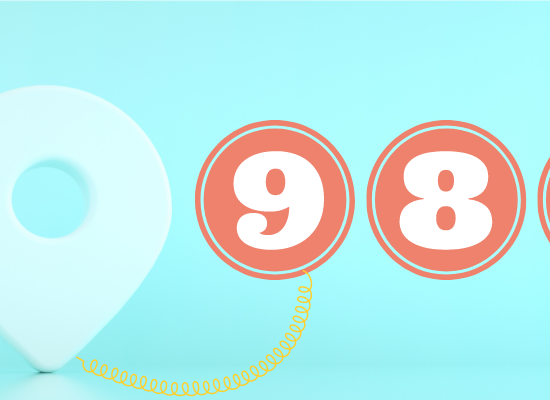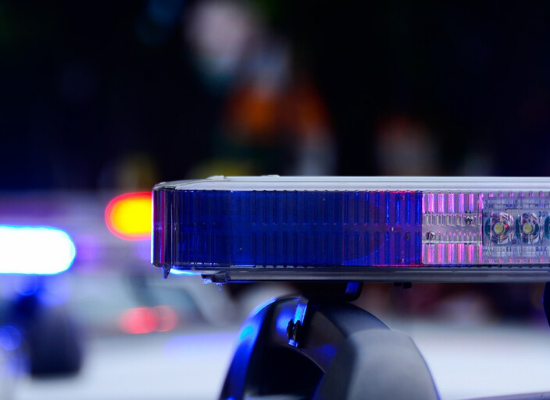
Stephanie Hepburn is a writer in New Orleans. She is the editor in chief of #CrisisTalk. You can reach her at .
In January 2020, a point-in-time count in the United States revealed homelessness continues to be a public health emergency. There were 580,466 people experiencing homelessness on a single night, a 2.2% percent jump from the previous year. Nearly 40% were unsheltered and living in abandoned buildings, cars, encampments, parks, or sidewalks. Unsheltered homeless people frequently interact with law enforcement and face increased marginalization and barriers. “They often have multiple morbidities,” says Kevin Martone, “including mental illness, substance use disorders, and physical health challenges.” “Also, they’ve likely experienced trauma.” These additional layers can make it more complicated for systems to sort through and coordinate care, particularly in communities where those systems aren’t comprehensive or well-connected. Martone is the executive director at Technical Assistance Collaborative, a nonprofit that advises and gives technical help to states and communities across the U.S. on mental health, substance use disorders, Medicaid, and homelessness.
With 988 on the horizon, Martone wonders who will respond to the call when a homeless person is in crisis. “The answer,” he says, “lies in the integration of care within and between systems.”
Most communities have behavioral health and housing systems that operate separately. The result is that each field views crisis through its own vantage point. “In behavioral health, a person’s distress is seen as psychiatrically driven,” says Martone, “while in housing, they believe the person’s crisis to be homelessness.” As leaders prepare for 988, they’re examining the linkages to care within and between multiple systems, including 911 and other call center public safety answering points, called PSAPs, and 988 call centers. These interconnections should also include systems designed to match people to social services—211 or 311, depending on the community—and corresponding street response teams for all three. According to Martone, connecting people to care and support must go beyond just handing someone a phone number to call.
A comprehensive behavioral health crisis system requires crisis responders to be holistic in their approach, examining not only a person’s mental or substance use challenges but also if they’re experiencing houselessness. “That should include targeted training at 988 call centers, mobile crisis services, and crisis stabilization programs,” says Martone. The inverse is also true—however, the contrast in language and culture between the two spaces presents barriers. Billing, for example, is an essential part of how many behavioral health services keep afloat, but housing services rarely do the same kind of documentation. “They do things differently but need to come together to develop a truly robust crisis system—not one that solely addresses one part of the puzzle,” he says.
It’s not just behavioral health and housing services that must partner to address crises but also law enforcement. Community leaders have increasingly focused on the criminalization of people experiencing mental health or substance use crises and the risk of a police interaction turning deadly. What’s frequently less emphasized is that how a community’s law enforcement interact with the homeless population similarly shapes whether people in need are criminalized or matched with care and services. Many jurisdictions are flush with public nuisance and loitering ordinances that target the life-sustaining activities people experiencing homelessness might take part in to survive. “In those types of communities,” he says, “officers are more likely to arrest someone than try to refer them to services.” The “default to arrest” culture makes it challenging for mobile crisis services and alternative street crisis responders to divert people in crisis from arrest. It also creates an understandable skepticism among homeless populations, making it harder for crisis interventionists to foster trust if they work alongside law enforcement. That’s especially true among people who’ve experienced discrimination and marginalization within systems meant to provide safety and care.
Also, communities can’t separate racial and ethnic justice from houselessness. Black and Hispanic people disproportionately made up the homeless population point-in-time count in January 2020—39% and 23%, respectively. And while American Indian, Alaska Native, Pacific Islander and Native Hawaiian people together comprise only 1% of the U.S. population, they make up 5% of the overall homeless population and 7% of the unsheltered homeless population. These groups continue to face pervasive systemic racism and biases and have been disproportionately affected by the Covid pandemic: the virus itself and its economic effects like food insufficiency, inability or difficulty paying for housing and household expenses, and unemployment. Additionally, according to a study published in the journal Pediatrics, American Indian/Alaska Native, Black, and Hispanic children were 4.5, 2.4, and 1.8 times more likely to lose a parent or grandparent caregiver to Covid. American Indian/Alaska Native, Black, and Hispanic people are also disproportionately at risk of a law enforcement interaction turning deadly.
Martone says 988 must have an equity focus at every step of its development to foster systemic change. That includes tracking demographics alongside behavioral health and quality of life calls 911 receives and those that divert to 988. “Without a comprehensive feedback loop,” he says, “prejudice will continue to play out through 911 and also 988.” Calls to 911 are typically made by third parties, which means call takers and operators depend on information shaped by a caller’s perceptions and biases of the person they’re calling about. “Will a 911 call about a White man who is delusional and homeless likely get transferred to 988?” He asks. “And will a 911 call about a Black man experiencing the same stay with 911 and result in police dispatch because the caller perceives the man to be dangerous?” Martone’s concerns are valid—a study published in 2017 revealed that people often misperceive Black men to be larger and more threatening than White men of the same size. Tracking demographics would keep a continued magnifying glass on who 911 diverts to 988 and who it doesn’t.
Martone points out that outcomes for homeless populations are far better in police department jurisdictions with outreach teams that work closely with behavioral health, primary care, and quality of life service providers. “They’ve illustrated how cross-education, -training, and -planning can work,” he says. Collaborative 988 partnerships should also include Continuum of Care programs, state or local planning bodies that coordinate funding for housing and services for people experiencing houselessness. These partnerships could also result in critical data sharing since CoCs track homelessness in their community, identifying people with increased vulnerabilities like chronic homelessness, serious mental illness, and severe physical challenges. Martone notes that sharing data, while respecting confidentiality laws, could give crisis responders—first responders and those addressing behavioral health and quality of life crises—more information on the person in need and the systems with which they’ve already interacted. “If law enforcement and mobile crisis services are connected to CoC data,” he says, “and they come across a person experiencing homelessness, they can quickly check to see if the person is already engaged with the local homeless community.”
Martone says he hopes all systems—and their corresponding crisis responders—not only work together but also incorporate a trauma-informed approach. He shares a story from his days as deputy commissioner of the New Jersey Department of Human Services. He was entering the building where he worked when he noticed a fire truck and two police cars parked outside. A man was smoking inside the first floor food court, and two police officers had begun circling him, telling him to put out his cigarette. He didn’t. “He just keeps puffing away,” says Martone. Finally, one officer said, “Listen, if you don’t put the cigarette out, we’re going to arrest you.” Another officer grabbed the man’s arm, and a tussle ensued.
Trying to stop the trajectory of where the interaction could wind up, Martone asked the officers if he could talk to the man. They shrugged but said okay. He approached him and said, “You know, you’re not supposed to be smoking a cigarette in the building—do you want a piece of pizza?” The man said yes. Martone turned to the officers and asked, “If I go get this guy a piece of pizza, can he walk out of here?” The officers nodded.
“It could have turned into an ugly scene when what the person needed,” says Martone, “was to get out of the cold and eat some food.”
Learn more: “Effective Behavioral Health Crisis Care for Individuals Experiencing Homelessness,” by Kevin Martone, Francine Arienti, Rachel Post, and Ashley Mann-McLellan.









